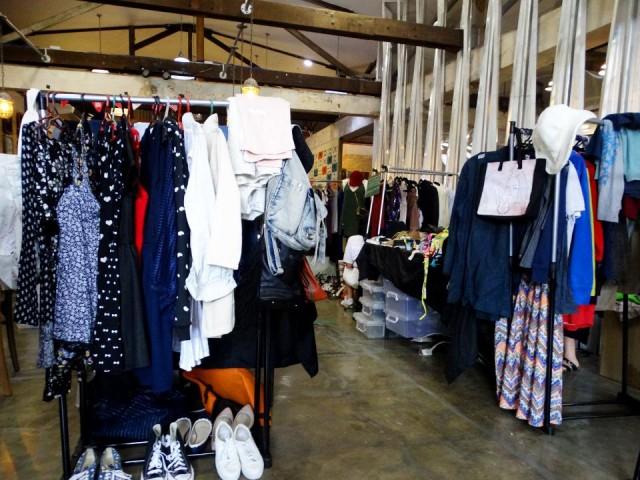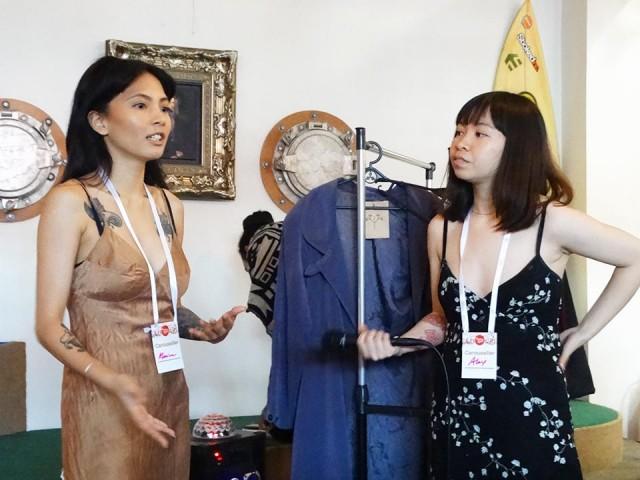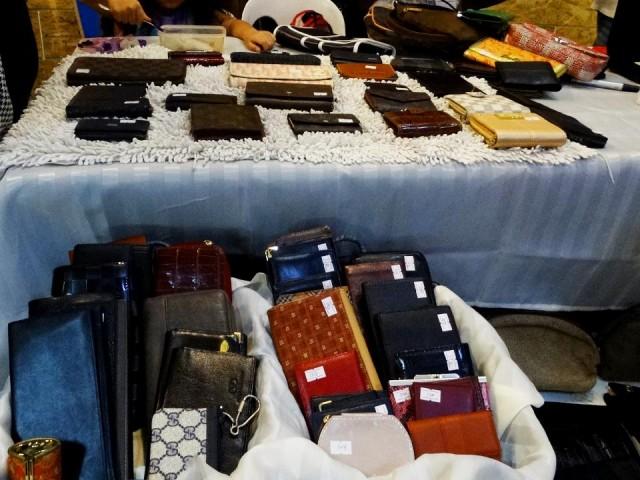How to second-hand shop: 7 tips from sustainable fashion advocates Janina Manipol, Julz Savard, Monica Vivar and Alex Lizares
Guess what? Sustainable fashion is in.
What is sustainable fashion, you may ask? It's "clothing, shoes and accessories that are manufactured, marketed and used in the most sustainable manner possible, taking into account both environmental and socio-economic aspects," according to Green Strategy.
One way to practice sustainable fashion is through wearing pre-loved clothes and selling unwanted pieces. It not only saves money but it is also an enjoyable and inexpensive way to help save the environment.

"For me whenever you can reuse something, as long as it’s still good there’s nothing wrong with it. It helps us become environmentally conscious and at the same time we really do just sustain ourselves with the things that we already have just like water the more you conserve the better," said singer Julz Savard, adding going to the mall and seeing the clothes often have her asking: Where are they coming from?
Stylist and eco-conscious fashion brand Denuo founder Monica Vivar believes shopping second-hand can help divert waste from our landfills. "It eliminates the need to have it recycled, or have it broken down. Second-hand shopping doesn’t cost any more waste. It just goes back to someone else’s closet and right there, it closes that cycle."
Mobile online marketplace Carousell Philippines held its first ever pre-loved bazaar "Treasure Market" at STKD Zeppelin in Pasig City on Wednesday to promote and encourage fashion followers to support sustainable fashion.
At the event, fashion blogger Janina Manipol, joined Monica, Alex, and Julz and shared with GMA News Online their how-to's in second-hand shopping.
They not only gave us tips on how to mix-and-match pre-loved pieces, but also how to care for them. Below are a few of their tips:
1. Always check the quality
Don't just buy something for its cheap price, always inspect the quality.
"Check that everything’s still in order, like the color is still vibrant, at least the stitching is still good. It doesn’t have to be perfect but it’s still good, no stains or anything," Julz told GMA News Online.
Alex emphasizes the importance of knowing a good seamstress so even if the quality isn't that great, "the seamstress can mend your garments."

2. Think about how you plan to wear the piece
Monica believes it's best to think about what purpose of the piece is for you.
"You can first asses the piece if it’s structurally sound for your purpose. Personally, even when it’s torn, I would still [get it], and we construct the dresses, the purpose of it is the aesthetic appeal," she noted.
"When you buy second-hand it’s more on appreciating the age in relation to the item. If there is a tear, you can think about how to repair it, or if you can wear it with the damage," Monica shared.
Janina recommends buying pieces that are easy to pair with other items that are already in your closet. "If you see something nice like a denim jacket that’s like 300 pesos lang [you think what you can pair it with]. I think anything is reusable you just have to mix and match that fits your style."
3. Ask questions
Another thing to keep in mind when buying pre-loved is to know its history. Ask the seller a thing or two about an item, this will save you from second hand shopping mistakes.
"When they don’t ask the history, they don’t talk to the seller and they just buy it, then they won't know where it came from. You just have to ask," Janina said.
"The buyer should take responsibilities to ask questions and make sure it’s meeting what they expect. You can ask the seller how do they see it being worn, it’s one thing you may be unsure of, should I wear it as a dress should I wear it like this, be open to asking questions," Monica said.
4. Read labels
Reading the garment care label is one way to make your item last longer, "If you buy a silk shirt and you didn't know it was silk, and you washed it the wrong way? I think that’s one mistake when you don’t read the label."
Read the garment care tags to know how to properly protect and repair your items.

5. Look for denim, bags and leather
Julz who says she's known for being a "thrift shopper" finds treasure in well-preserved bags and shoes.
"I see a lot of pre-loved users sell their bags from way back, shoes from way back. As long as they are able to preserve these items, I super want them because like the pieces that have a lot of character," she said.
Alex, meanwhile thinks that denim that can last up to its second owner is a gem. "Denim is definitely, for me personally, because when you buy denim from ukay-ukay and it’s vintage, you know it’s made better or made well. Unlike existing denims these days, some of them are already synthetic fabric."
Leather, too, is best pre-loved because it ages well, says Monica but admits it can be tricky.
"There’s also some vegans who might not like leather but the key there is to you get a vintage piece. Rather than increasing the demand for new leather, appreciate existing leathers as well as linen and silk the natural textiles," Monica said.
6. Buy from a credible seller
There are several misconceptions about buying preloved. Most consumers are afraid to even try buying used items but one way to save your from a shopping dilemma is to get items from a credible seller and get items from a person who shares the same size and style as you.
"You just have to see that the person you’re buying from has credibility. They know what they’re doing, the picture makes such a big difference because things online can look different. be seen one way, the minute you get them they’re a different way, as long as the user is taking angles, basically showing off the entire product so you get a really good vision of it," Julz noted.
7. Consider proper storage
"From the get-go, whenever you buy something, for instance shoes, I keep all the boxes of my shoes because I really like to put them back in boxes. I don’t like stacking them up on top of each other. Even with my bags, even when they pare laid out, they are laying in such a way that they’re not going to get crumpled. when it comes to clothes it’s really hard, I think you just have to be more aware, when it comes to washing your clothes, what can be ironed, what’s shouldn’t that’s it," she said.
It's easier for Monica to choose and blend her clothes together to achieve the style she wants for the day since she organized her closet by color, "With my personal closet it’s color-coordinated but also, so all of the dresses with a certain hue are together it just makes it easier to see the lengths and also pattern-wise, sometimes we wanna go more lose and more fitted that’s the initial guide for the style for the day, then you go to what color or what silhouette you’d want to go into," she said. — LA, GMA News




